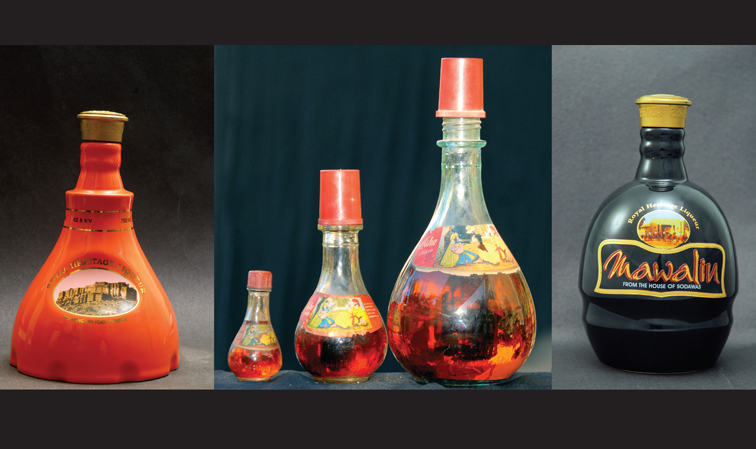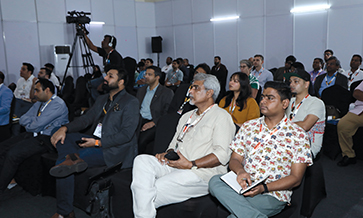Before India’s Independence, various royal families in Rajasthan – both major and minor – had their proprietary liqueur, made by their family Ved. Some of these were even distilled. However, in 1956, these permissions were withdrawn by the Indian government.
In 1998, the king of Jodhpur, Maharaja Gajsinghji, wrote to the then Rajasthan chief minister, requesting that heritage liqueurs be re-introduced so that this important part of the state’s heritage could be preserved. The Heritage Liqueur Rules were then drafted as a part of the Rajasthan Excise Act.
But it was only in 2005, when Vasundhara Raje was chief minister, that Mr Anil Singh, the then Deputy General Manager of Rajasthan State Ganganagar Sugar Mills (RSGSM), took the initiative to kick-start the project and obtained the government’s approval.
Apart from the recipes offered by Gajsinghji, an advertisement was also placed in newspapers inviting all princely states to come forward with their recipes. Of the responses received, eight were finalised by RSGSM.
Royal Kesar Kasturi, Royal Jagmohan, Royal Mawalin and Royal Chandrahaas are known as winter liqueurs, as they are perceived to more suited to the cold months.
The four summer brands are Royal Rose, Royal Elaichi, Royal Apple Orange and Royal Saunf. Out of these, Apple Orange was later discontinued.
Ayurvedic origins
Apart from the heritage aspect of these liqueurs, they are also completely natural and have no synthetic colours or chemicals additives. As several of them also had Ayurvedic origins, they also are believed to have beneficial effects on the body.
While the ingredients are carefully sourced by the Ayurveda department, attention is also given to packaging, and a premium version of the four major liqueurs was also offered in ceramic bottles.
I first came across these liqueurs in 2011 and tasted a few of them, coming away very impressed by the ones I tried, including the Mawalin and Chandrahaas.
In 2012, we also made a presentation at the prestigious ‘Tales of the Cocktail’ in New Orleans (US) on native Indian spirits and liqueurs, wherein we got those assembled to try a couple of them. The feedback was extremely positive!
On the domestic front, however, matters have languished. It is only recently that RSGSM has resumed production of a couple of variants. This is due to the direct intervention, a year or so ago, of the then finance secretary and excise commissioner, Dr. Prithviraj Sankhala, who saw considerable potential in the heritage liqueurs, not just in the core business, but also in possible spin-off from tourism.
According to him, the private sector has also begun to get involved, and a range of liqueurs is now available under the Maharani Mahansar brand, being made in Churu district of Rajasthan. These include Saunf, Mint, Rose, Bitter Lemon, Pan and Somras.
Initial clearances for this unit were received in 2015, but commercial production began only in May 2020. With an increased focus on going ‘vocal for local’ and craft Indian spirits gaining consumer preference, the time seems ripe for a second coming of these priceless bits of our heritage.
Reviving legacy
Rajasthan’s medieval history is replete with a rich legacy of food, cuisine, culture and liqueurs. Most princely states, or even smaller thikanas, have had their own recipes for these liqueurs. Fortunately, many of these princely states have preserved these documents.
“To revive the legacy, we began producing some of these select recipes via RSGSM a decade ago,” said Dr Sankhala, “It took off very well in the first 2-3 years, but stagnated for the next 5-7 years.”
There were in all about nine brands that were quite popular, and sold in attractive packaging, with some of the royal liqueurs being sold in ceramic bottles.
“We have begun a project to revive these liqueurs and have resumed production of some of the brands,” Sankhala said, adding: “Our estimate is that, if executed properly, it could be a US$ 100-million business.”
Rajasthan’s capital, Jaipur, is also a World Heritage City and this could have a multiplier effect on tourism, as the food and beverage sector goes hand-in-hand with tourism.
“When we look at craft distilleries and breweries in Europe and the US, we see that a lot of them use local ingredients and herbs. This leads to the production of good quality liquor that also benefits the agriculture sector,” Sankhala noted.
Rajasthan is trying to revive these traditions in India and also remove obstacles in their production. One small example is grant of permission from the government for the sale of heritage liqueurs in beer bars.
“We are also looking at other policy changes that may take effect in the new excise year,” Sankhala assured interested manufacturers.













